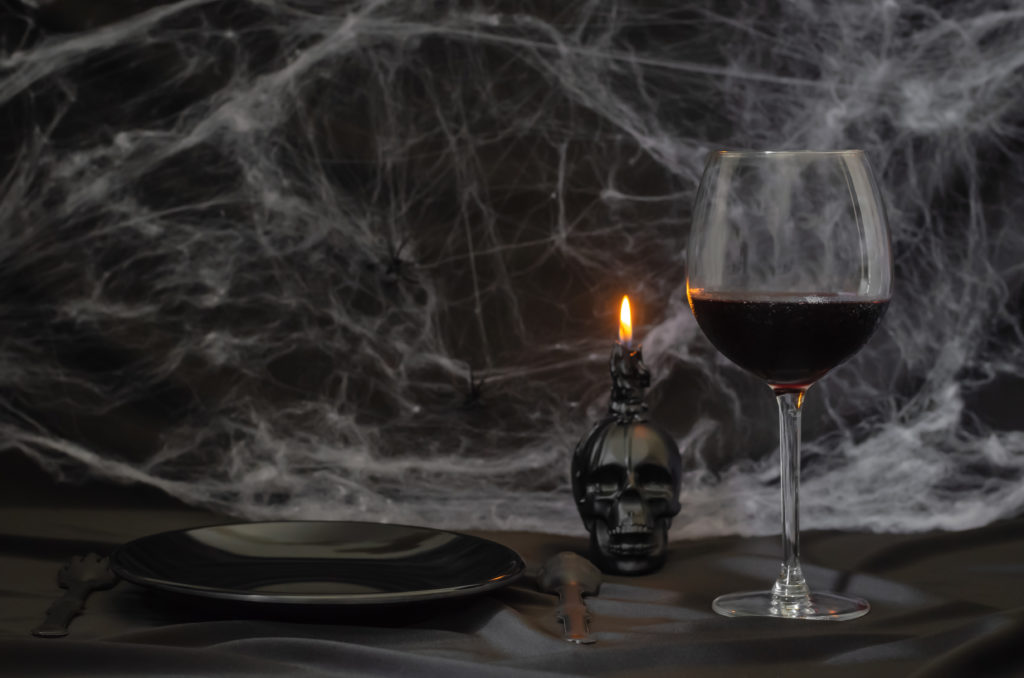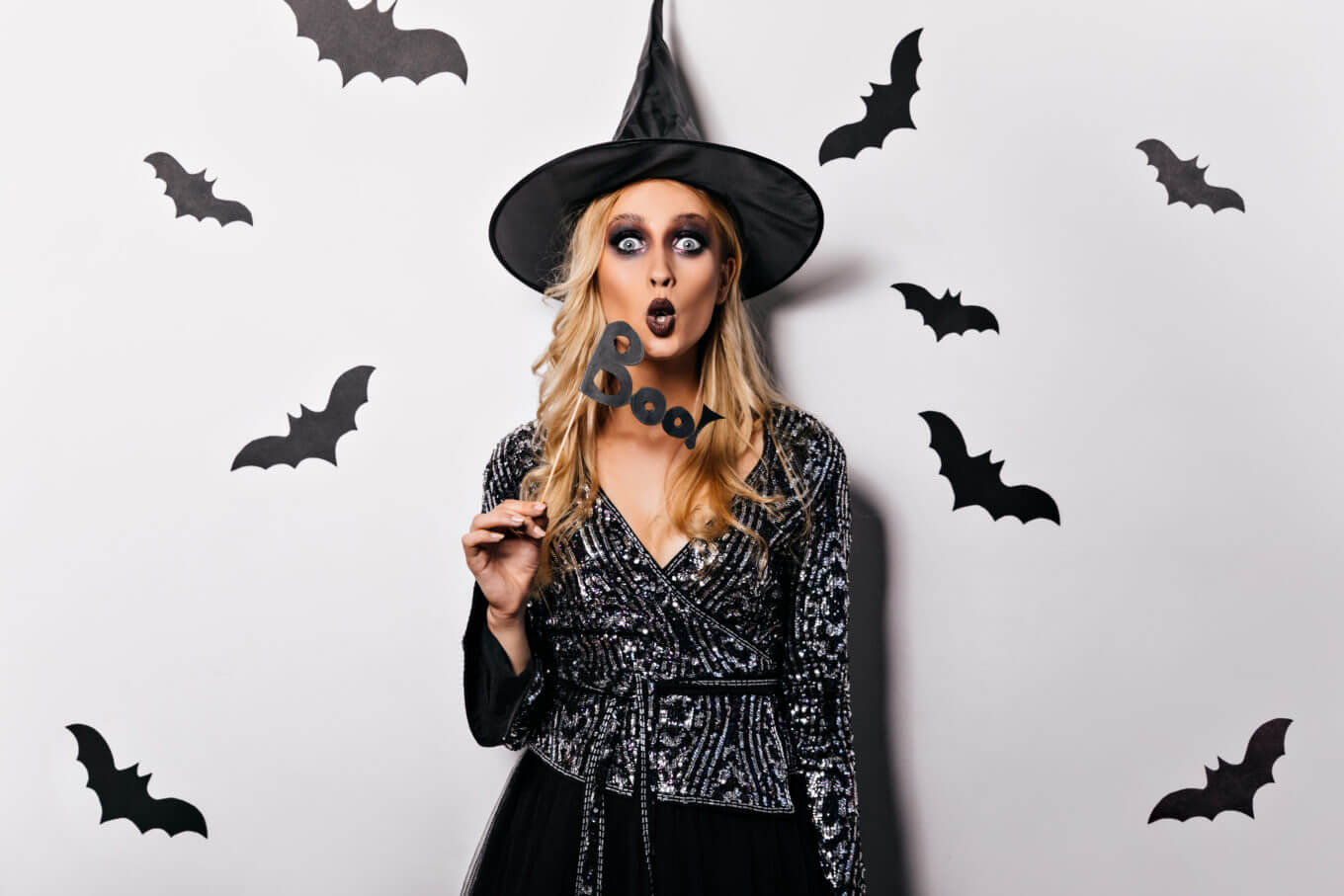Samhain in Celtic Tradition – The Celts considered Samhain the most important of the four quarterly fire festivals, occurring at the midpoint between the autumn equinox and the winter solstice. Hearth fires in family houses were left to burn out while the harvest was harvested during this time of year.
You may think of Helloween or Samhain as a witchy holiday from the Eighth Century – sacred bonfires, marking seasonal festivals, employing ancient traditions and offerings of food.
After the harvest was finished, the celebrants worked with Druid priests to ignite a community fire with a wheel that caused friction and sparked flames. The wheel was thought to be a depiction of the sun and was used in conjunction with prayers. Cattle were sacrificed, and participants returned home with a flame from the communal bonfire to relight the hearth.

Early sources describe Samhain as a three-day, three-night celebration. The community was forced to appear before local monarchs or chieftains. Failure to participate was believed to result in divine punishment, general illness, or death.
In Ireland, there was also a military aspect to Samhain, with festive thrones prepared for soldiers’ commanders. Anyone who committed a crime or used a weapon during the celebration was sentenced to death.
Some sources indicate six days of bingeing on alcohol, usually mead or beer, as well as gluttonous feasts.
Monsters of Samhain
Because the Celts believed that the barrier between realms could be breached during Samhain. They made offerings for fairies, or Sidhs, which were left outside communities and fields.
It was anticipated that ancestors would also pass over during this time. Celts would disguise themselves as animals and monsters to avoid being kidnapped by fairies.
Some specific monsters were related to Samhain mythology, such as a shape-shifting creature known as a Pukah who takes harvest offerings from the field. The Lady Gwyn is a headless woman clad in white who pursues night wanderers with the help of a black pig.
At times, the Dullahan appeared as mischievous creatures and as headless men on horses carrying their heads at other times. Their arrival, riding flame-eyed horses, was a death portent to anybody who came into contact with them.
The Faery Host, a gang of hunters, may also haunt Samhain and kidnap humans. The Sluagh, who would come from the west to enter dwellings and steal souls, are similar.
Samhain Myths
“The Second Battle of Mag Tuired,” which depicts the ultimate fight between the Celtic pantheon known as the Tuatha de Danann and wicked oppressors known as the Fomor, was one of the most popular Samhain myths told during the festival. According to mythology, the battle took place during the Samhain season.
“The Adventures of Nera,” in which the hero Nera sees a corpse and fairies and reaches the Otherworld, is one of the most renowned Samhain-related stories.
Samhain played a role in the mythological Celtic hero Fionn mac Cumhaill’s adventures when he confronted the fire-breathing underworld dweller Aillen, who would burn down the Hall of Tara every Samhain.
Samhain is also mentioned in another Fionn mac Cumhaill tradition. The hero is banished to the Land Beneath the Wave. It takes place on Samhain and includes descriptions of the hero’s seasonal celebrations.
In the Middle Ages, Samhain was celebrated.
As the Middle Ages progressed, so did the fire festival celebrations. Samghnagans or more personal Samhain fires nearer the farms, developed a tradition, ostensibly to protect families from fairies and witches.
7 of the Most Dramatic Airplane Crashes in the United States
Carved turnips known as Jack-o-lanterns began to appear, strung on sticks and studded with coal. Later, pumpkins were substituted in Irish tradition.
In Wales, men played violent games in which they threw burning wood at each other and fired off fireworks. Men paraded with noisemakers in Northern England.
Samhain for Christians
As Christianity gained traction in pagan areas, church officials attempted to redefine Samhain as a Christian celebration.
Pope Boniface made the first attempt in the fifth century. He shifted the celebration to May 13 and designated it as a day to honor saints and martyrs. The October and November fire festivities, on the other hand, did not terminate with this proclamation.
Pope Gregory pushed the celebration back to the time of the fire celebrations in the 9th century. Still, he declared it All Saints’ Day on November 1. On November 2, All Souls’ Day would be observed.
Samhain is Halloween
Neither new festival eliminated the pagan elements of the celebration. Before being embraced in 19th-century America by Irish immigrants bringing their traditions across the Atlantic, October 31 became known as All Hallows Eve, or Halloween, and incorporated many of the ancient pagan practices.
Trick-or-treating is thought to have sprung from ancient Irish and Scottish rituals during the nights preceding Samhain. Mumming was the activity of dressing up in costumes, going door-to-door, and singing songs to the dead in Ireland. Cakes were offered as a kind of payment.
Halloween pranks are also famous at Samhain, albeit in the ancient celebration, the tricks were usually blamed on fairies.
Etymology of Samhain
Samhain is a modern Irish and Scottish Gaelic name, generally with the definite article An Samhain (Irish), An t-Samhain (Scottish Gaelic), and Yn Tauin (Scottish Gaelic) (Manx). The Scottish Gaelic spellings Samhain and Samhuinn are older variants of the word.
Samhain inspired the Gaelic names for the month of.
These names are derived from the Old Irish Samain or Samuin [sanj], the name of the medieval Irish festival held on November 1. This is believed to be Proto-Indo-European. As John T. Koch points out, it’s puzzling why a festival marking the start of winter would incorporate the term meaning “summer.”
One theory is that the name derives from the words sam (“summer”) and fuin (“end”), but this could be a folk etymology. Whitley Stokes proposed an etymology from Proto-Celtic *samani (“assembly”) in 1907, but Joseph Vendryes claimed it is unconnected to *semo- (“summer”) because the Celtic summer ended in August.
Calendar of Coligny
The month name is possibly related to the term Samain and includes the phrase for “summer” in the Gaulish Coligny calendar, which dates from the first century B.C.
During the “three nights of Samoni,” (Gaulish TRINOX SAMONI) a festival of some type may have been conducted (Gaulish ). Six months later, the month name most likely incorporates the term for “winter,” although the calendar’s starting point is unknown.
Helloween Origins
In Gaelic Ireland, the festival (feis) commemorating the beginning of winter was known as Samain or Samuin. It is mentioned in the earliest Old Irish literature, which goes back to the 10th century. It was one of four Gaelic seasonal holidays, the others being Samhain (November 1), Imbolc Bealtaine (May 1), and Lughnasa (August 1). The most important is said to have been Samhain and Bealtaine, which fall on opposite sides of the year.
In his 1890 book, The Golden Bough: A Study in Magic and Religion, Sir James George Frazer argued that the dates May 1 and November 1 are of little relevance to European crop-growers but of immense value to seasonal transhumance herdsmen. Cattle are driven to upland summer pastures at the beginning of summer and returned at winter. Thus, Frazer proposes that the year’s halving at May 1 and November 1 dates back to when the Celts were primarily pastoral people reliant on their herds.
Around the holidays of Samhain and Imbolc, Neolithic passage tombs in Ireland are aligned with the sunrise. The Mound of the Hostages (Dumha na nGiall) on Tara Cairn L Slieve na Calliagh is one among these.
All Saints Eve
Pope Boniface IV dedicated the Pantheon in Rome to all Christian martyrs on May 13, 609 A.D., and the Catholic feast of All Martyrs Day was founded in the Western church. Later, Pope Gregory III expanded the festival to include all saints and martyrs and relocated the celebration from May 13 to November 1.
By the 9th century, Christianity’s influence had spread into Celtic territories, eventually blending with and supplanting ancient Celtic traditions. The church declared November 2 All Souls’ Day, a day to remember the dead, in 1000 A.D. Today, it is widely believed that the church attempted to replace the Celtic festival of the dead with a related, church-sanctioned event.
All Souls’ Day was celebrated in the same way that Samhain was, with large bonfires, parades, and people dressed up as saints, angels, and demons. The All Saints’ Day celebration was also known as All-hallows or All-hallowmas (from Middle English Alholowmesse, which means All Saints’ Day). The night before it, the customary night of Samhain in Celtic religion became known as All-Hallows Eve and, finally, Halloween.
How Halloween Has Arrived in America?
Because of the strict Protestant theological systems in colonial New England, the celebration of Halloween was severely constrained. In Maryland and the southern colonies, Halloween was considerably more common.
As the beliefs and rituals of various European ethnic groups and American Indians merged, a uniquely American version of Halloween emerged. “Play parties,” which were public activities meant to celebrate the harvest, were the first celebrations. Neighbors would tell ghost stories, tell each other’s fortunes, dance, and sing.
Colonial Halloween celebrations also included the telling of ghost stories and various forms of mischief-making. Although Halloween was not yet celebrated across the country, annual autumn festivities were prevalent by the mid-nineteenth century.
America was inundated with new immigrants in the second part of the nineteenth century. These newcomers, particularly the millions of Irish escaping the Irish Potato Famine, helped promote Halloween across the country.
The Origins of Trick-or-Treat
Borrowing from European traditions, Americans began dressing up in costumes and going door to door asking for food or money, a practice that evolved into today’s “trick-or-treat” tradition. Young ladies believed that by performing tricks with yarn, apple parings, or mirrors on Halloween, they could discern the name or appearance of their future husbands.
In the late 1800s, there was a movement in America to make Halloween a celebration about community and neighborly gatherings rather than ghosts, pranks, and witches. Halloween parties for both children and adults became the most popular way to commemorate the holiday around the turn of the century. Parties with a focus on games, seasonal delicacies, and colorful costumes.
Halloween Films in Pop Culture
For commercial success, scary Halloween movies have a long track record of being box office hits. The “Halloween” franchise, based on the 1978 original picture directed by John Carpenter and starring Donald Pleasance, Nick Castle, Jamie Lee Curtis, and Tony Moran, is a classic Halloween film. In the movie “Halloween,” a little boy named Michael Myers murders his 17-year-old sister. He is imprisoned, only to escape as a teen on Halloween night and seek out his old house and a new target.
It is regarded as a classic horror film, even down to its eerie music, and it inspired 11 additional films in the franchise as well as other “slasher films” such as “Scream,” “Nightmare on Elm Street,” and “Friday the 13th.” In 2018, a direct sequel to the original “Halloween” film starring Jamie Lee Curtis and Nick Castle was released. “Hocus Pocus,” “The Nightmare Before Christmas,” “Beetlejuice,” and “It’s the Great Pumpkin, Charlie Brown” are other family-friendly Halloween films. Gallery of the True Stories Behind Classic Horror Films
